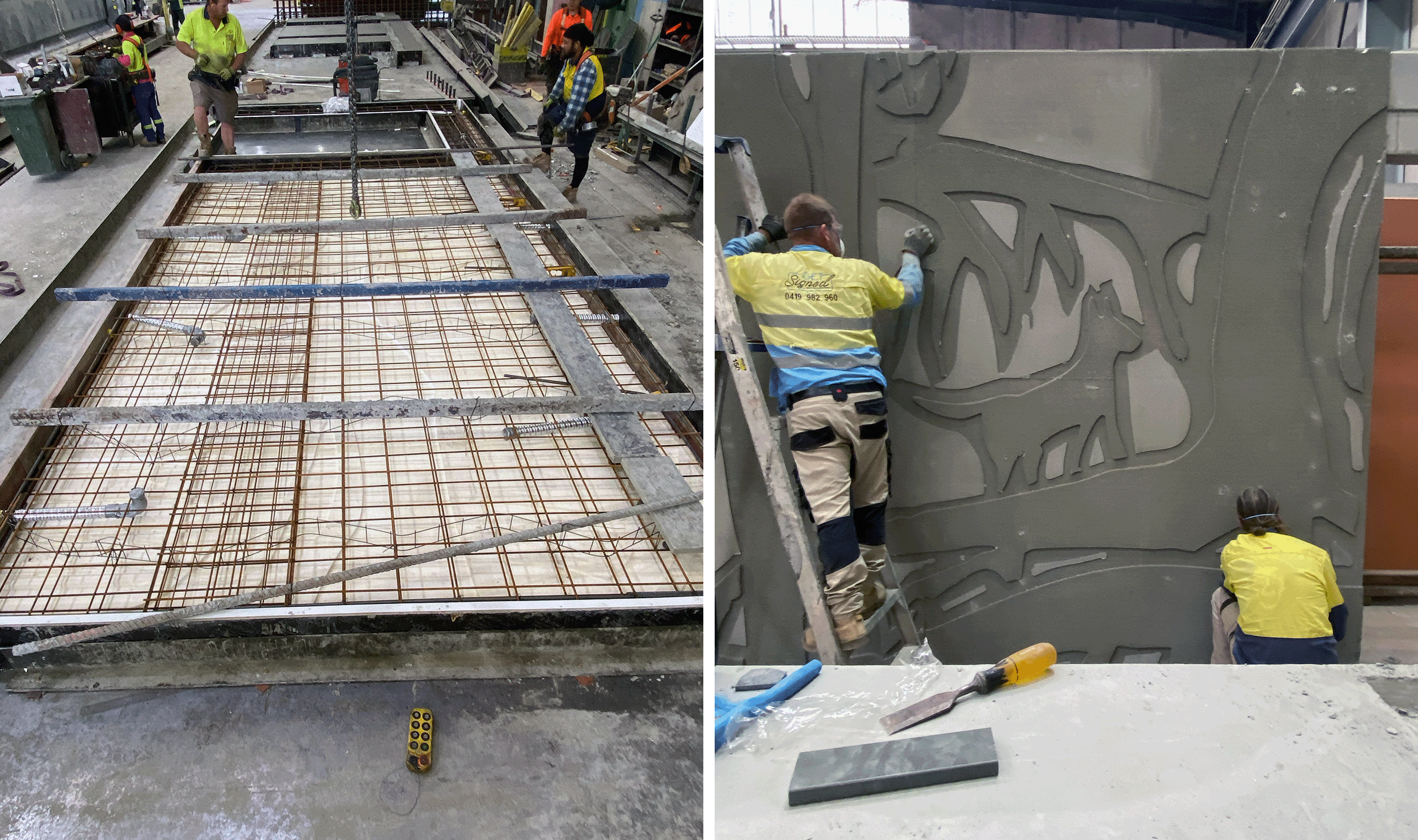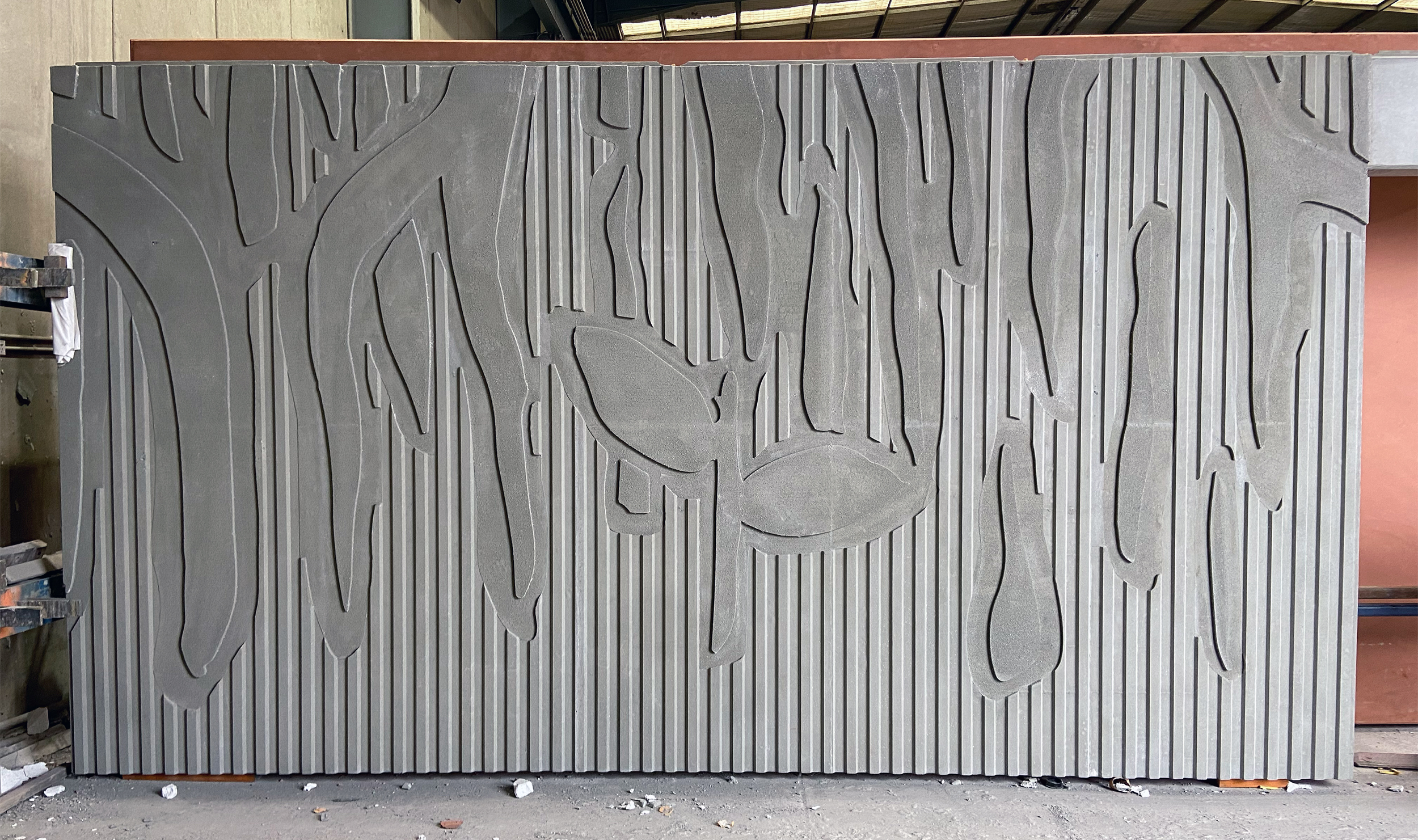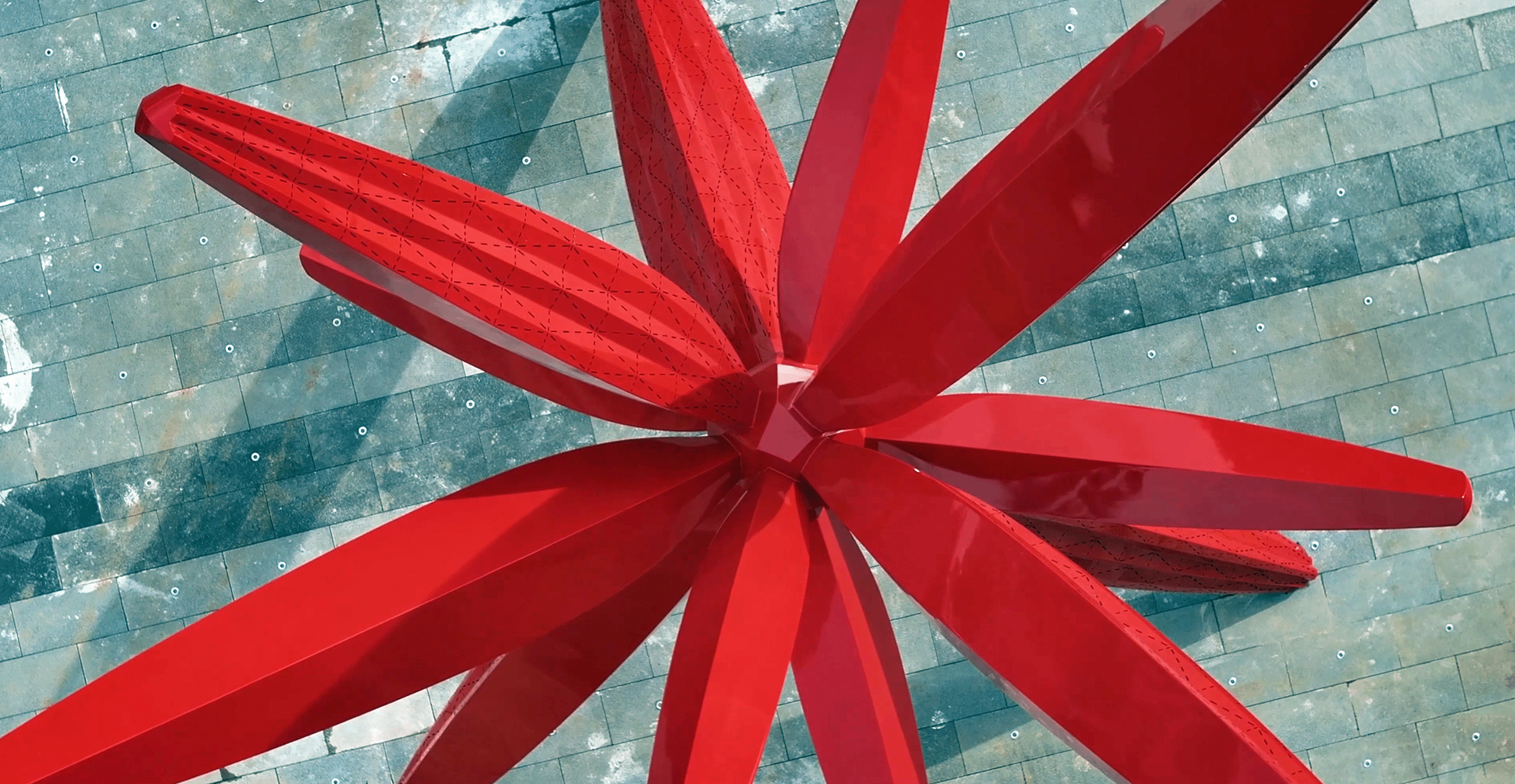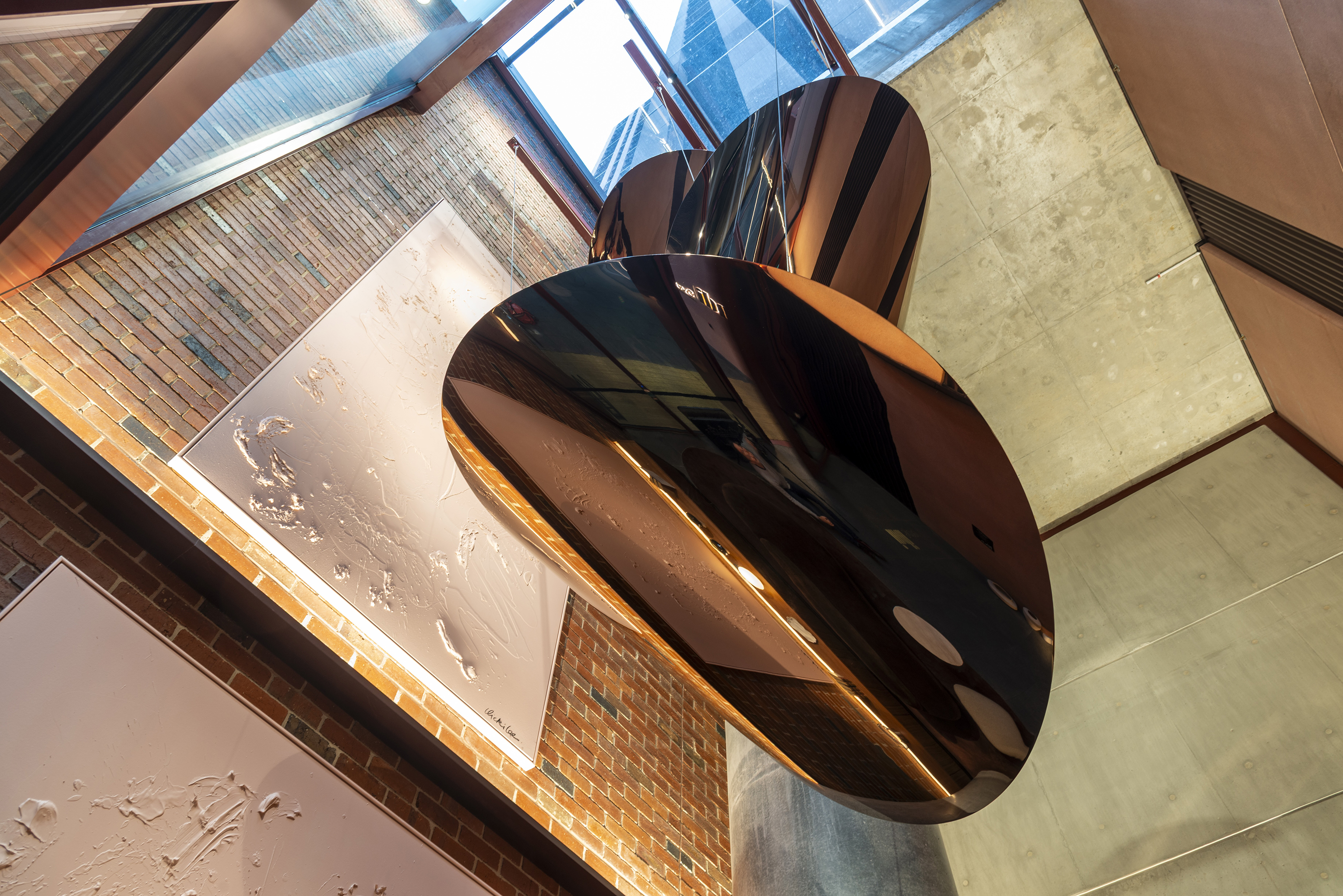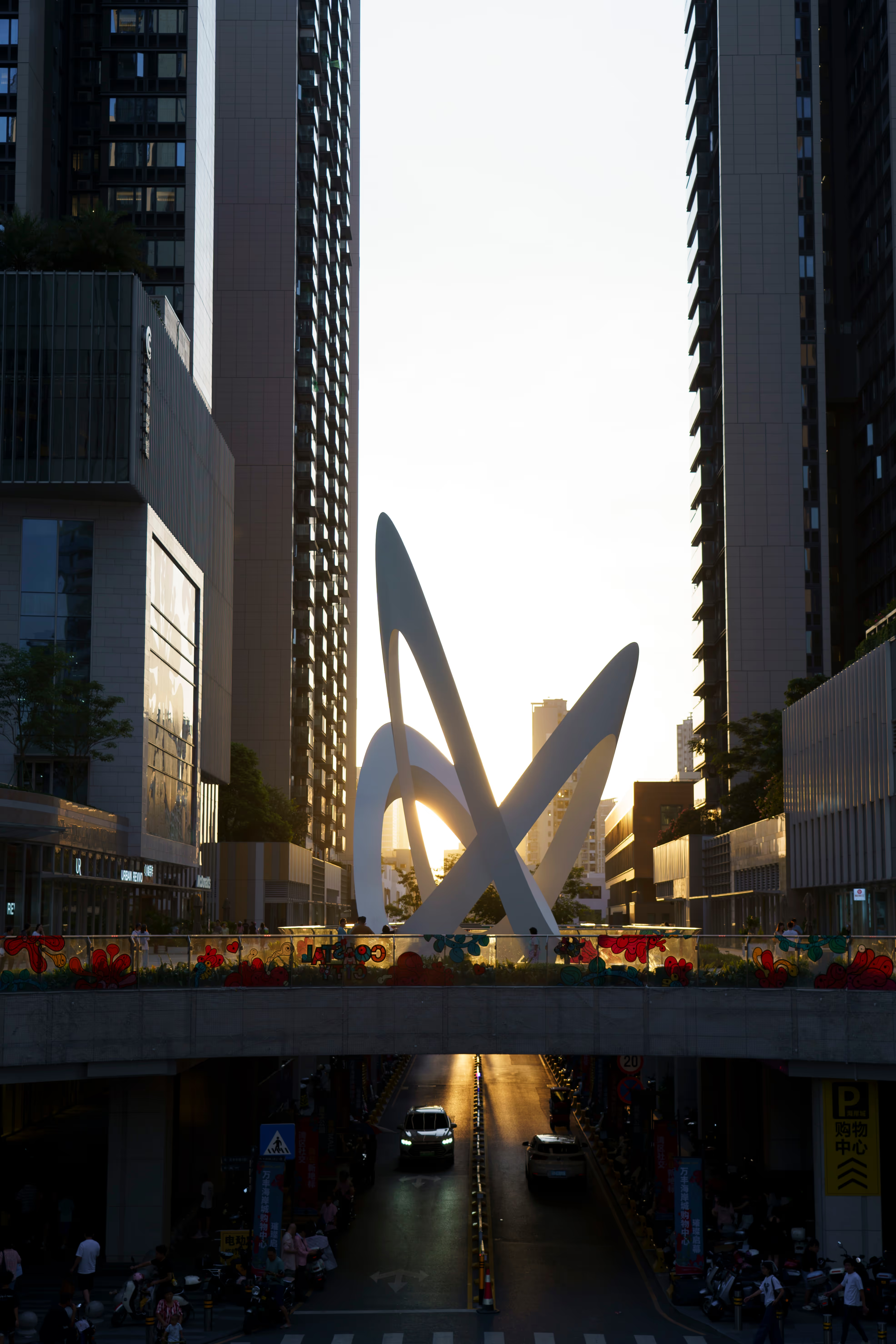Mana-gubra – Leanne Tobin – Public Art
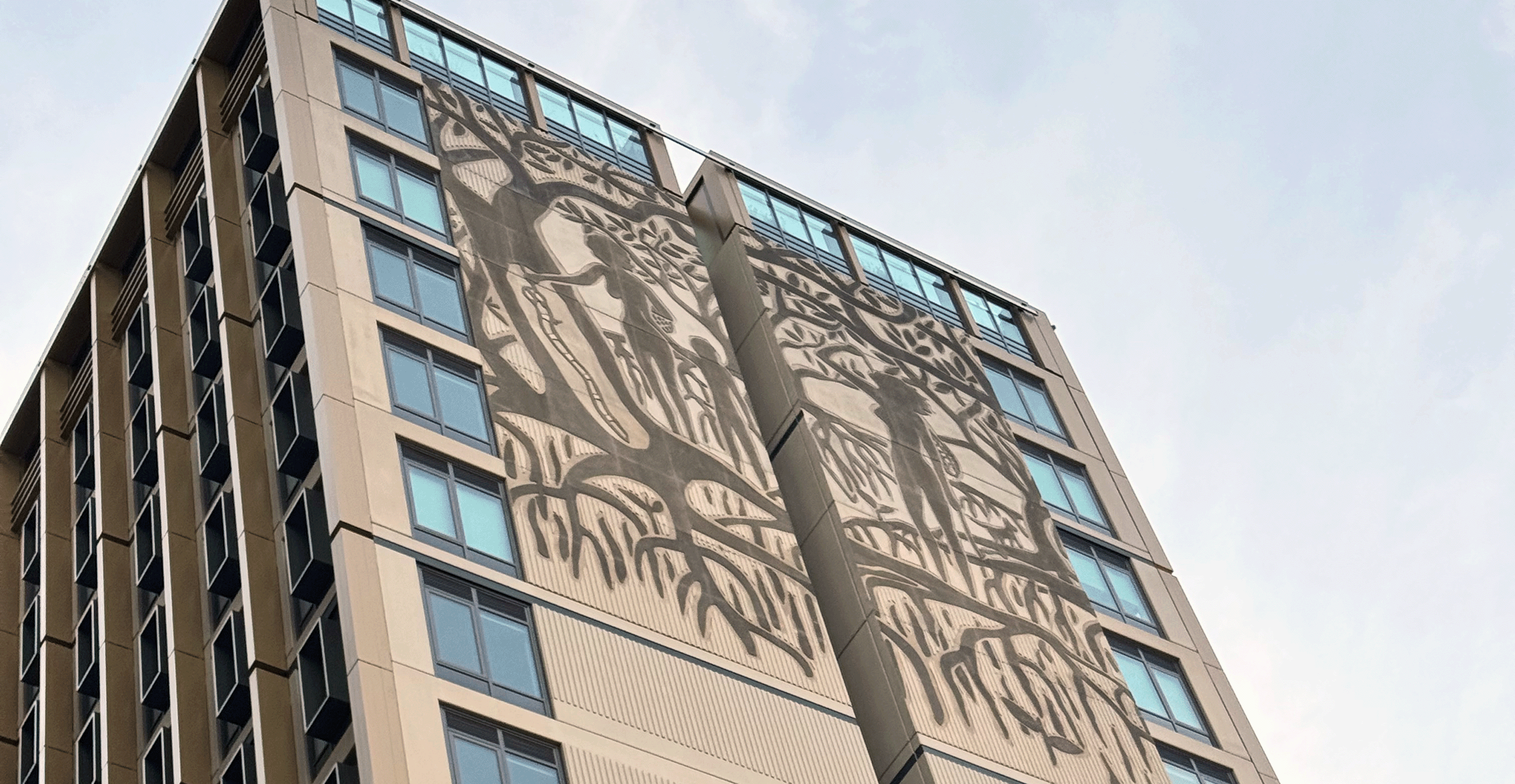
Our team worked with curator; Nicole Monks, Artist; Leanne Tobin and Richard Crookes Construction, embedding the art into the fabric of the building. Delivering 50 custom made precast panels, we ensured every element was delivered to suit the artistic intent, providing suitable contrast, colour and vibrancy across the facade.
This artwork, Mana-gubra, links with other artworks in the area:
Galara (fish harpoon) by Nicole Monks in collaboration with Uncle Charles Madden, Luke Russell and local community at 90-102. Regent Street, and Birrung (stars) by Nicole Monks and Uncle Charles Madden at 13-23 Gibbons Street.
The area around Redfern was once a beautiful place of plenty, rich with marine life. Swamplands in this area were fed by small waterways. Nearby Alexandra Canal, built in 1887, followed the path of a narrow, winding, part tidal, part freshwater creek that ran to Redfern.
The creek, along with other saltwater inlets of the Cooks River and Botany Bay, were visited by many local clans who relied on the abundance of food found in the estuaries and coastal swamplands of this area.







Leanne Tobin
Leanne Tobin is a multidisciplinary artist of Irish, English and Aboriginal heritage descending from the Buruburong and Wumali clans of the Dharug, the traditional Aboriginal people of the Greater Sydney region.
Leanne works both independently and collaboratively to tell stories of ‘place’. Her art practice seeks to inform and to also inspire open and honest dialogue while evoking an environmental conscience and respect towards Ngurra (Country) and its original people
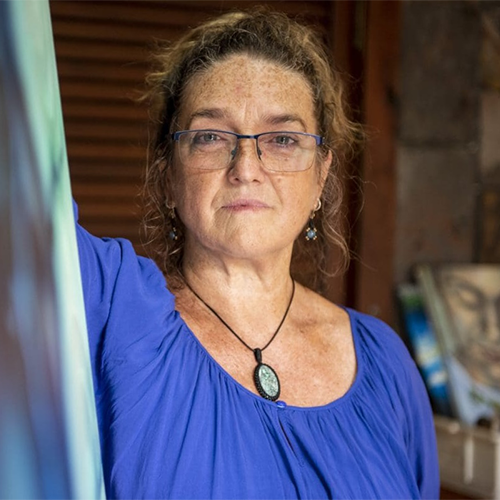
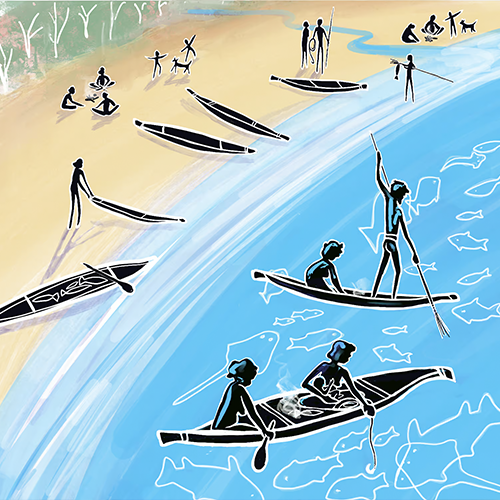
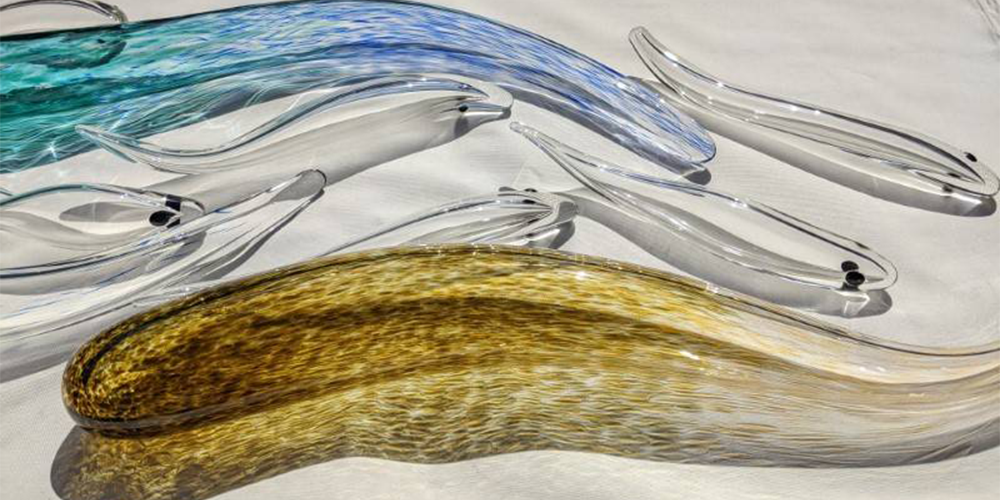
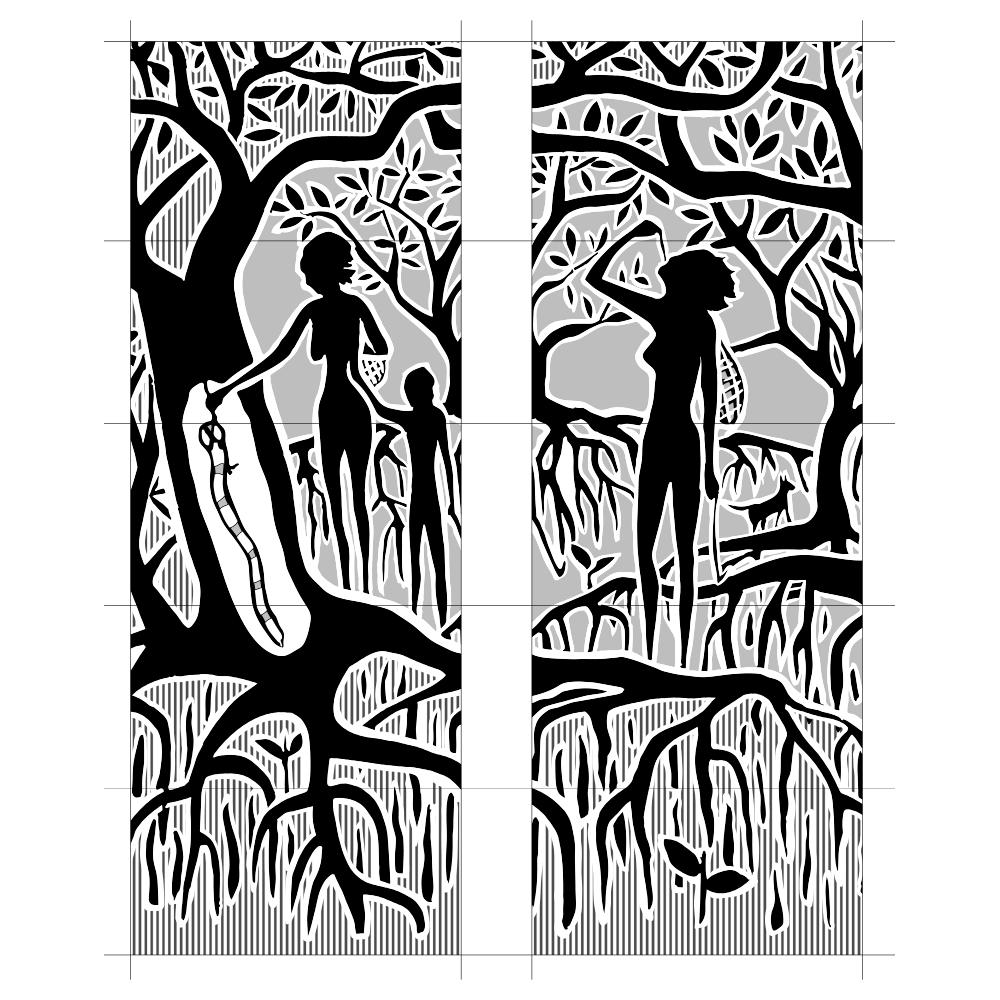
The Artwork
In the artwork Mana-gubra, women are seen collecting ‘gubra’ using a narrow hook they would carry in their hair. Gubra are marine wood- boring clams, commonly known as mangrove or shipworms, that live in submerged mangrove wood. Gubra were a popular delicacy along with oysters, crabs, pippies and other marine life gathered from the shallow waters.
The swamplands also provided grasses used to weave the nets, baskets and bags that women used for carrying their supplies. Women and children were the main food gatherers, collecting the more substantial share of the food required, and using their dilly bags to carry their food back to camp.” (Leanne Tobin)




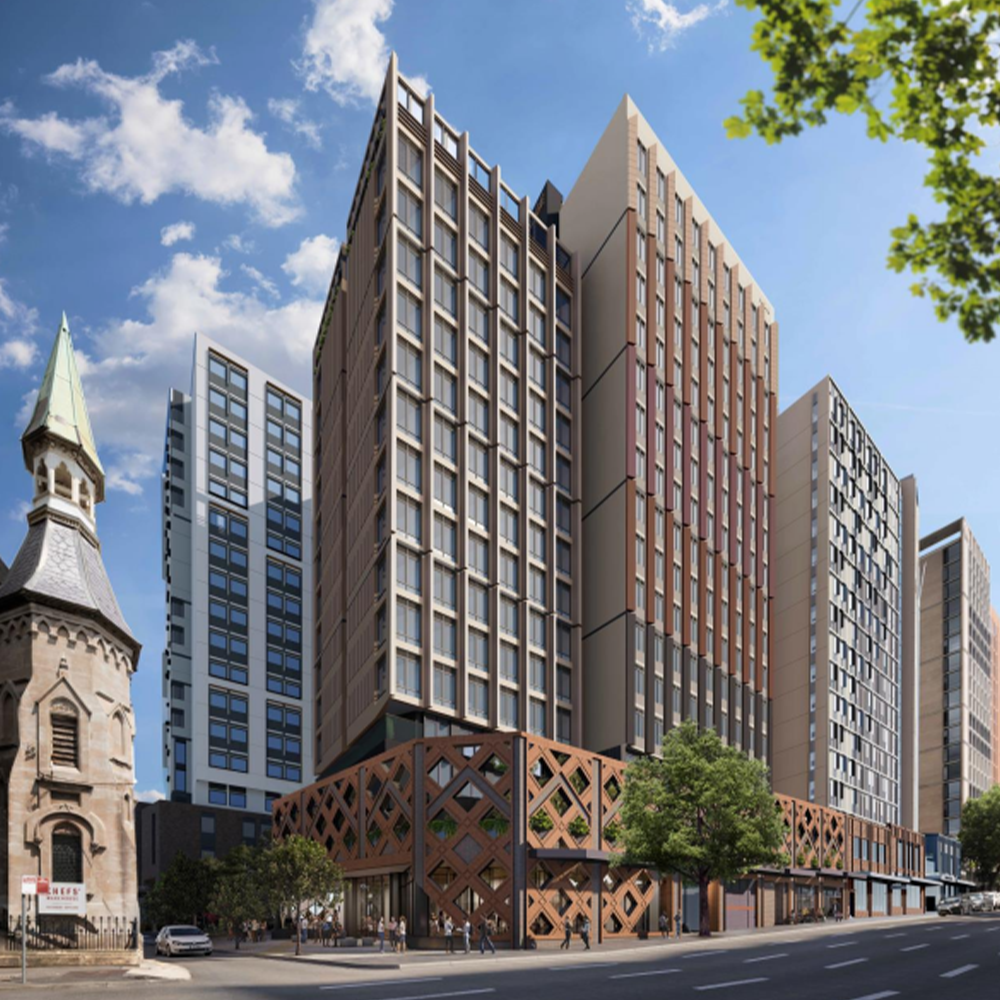
Statement by architect Andreas Antoniades
Aspects of this building were designed following consultation with local Gadigal Elders: Aunty Nadeena Dixon, Uncle Allan Madden and Uncle Charles ‘Chicka’ Madden. Aunty Nadeena is a practising weaver, and weaving patterns have been incorporated into the façade of this building.
Uncle Chicka and Uncle Allan recommended incorporating Gadigal colours and designs into the building, so warm ochre colours have been used in the interior and exterior of the building. Gadigal shield patterns inspired the brick façade and the vertical fins running along the side of the building evoke the theme of bridging Earth and Sky Country.
As you walk through this building, look out for these designs which have drawn inspiration from Gadigal people, culture and Country.
